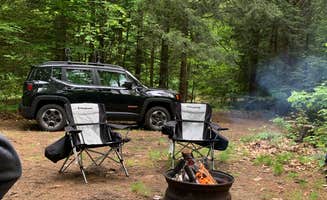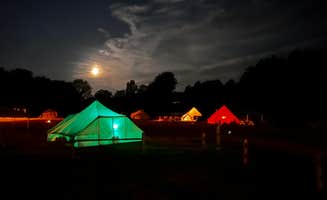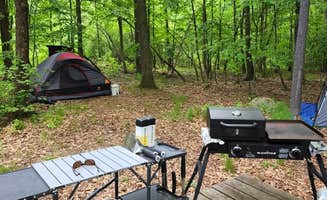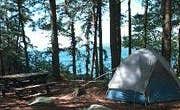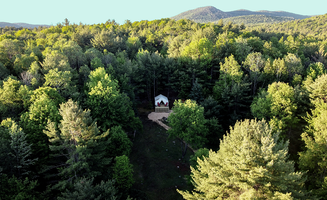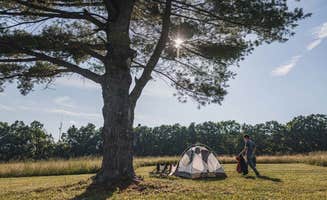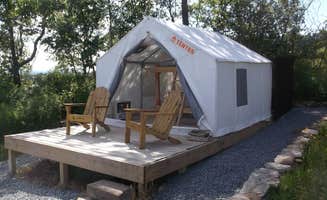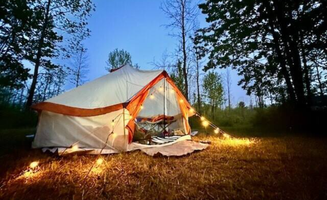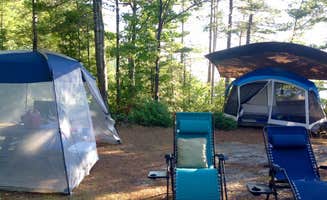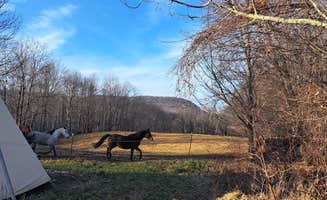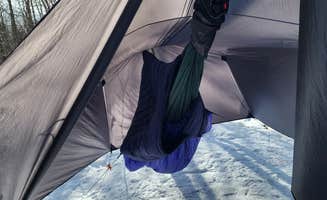Tent camping near Porter Corners, New York ranges from roadside pull-offs to secluded forest sites across elevations of 800-2,000 feet. The region sits within the southern Adirondack foothills, characterized by mixed hardwood forests and small lakes. Summer temperatures typically reach 75-85°F during day, dropping to 50-60°F at night, with rainfall averaging 3-4 inches monthly during peak camping season.
What to do
Water activities at Lake George: Lake George Islands campsites offer boat-access camping with swimming opportunities. "We rented kayaks and actually reserved a spot on our own private island. It was little, slightly wooded, and private," notes one Glen Island visitor who enjoyed "hearing only the tide crashing next to you all night."
Fishing in local waterways: Several campsites provide direct water access for fishing. A camper at Glen Island Group reported, "We ate fresh fish everyday," while another mentioned "great fishing, lots of fun to be had on the water and quiet peaceful evening by the campfire."
Mountain biking on forest trails: Forest areas surrounding Porter Corners contain trails suitable for technical mountain biking. Trails can be challenging with natural obstacles. Pack repair supplies as some routes have downed trees and rocky sections requiring navigation skills.
What campers like
Privacy despite proximity: Many dispersed sites offer seclusion while remaining accessible. A Cod Pond Dispersed Pull-Off camper appreciated that "You can hear cars from the site but the cars can't see you" and described their spot as having "a fire ring and plenty of space for multiple tents."
Island camping experiences: Lake George provides unique island camping opportunities. "We went for July 4th and got front row seats for their fireworks over the lake from our private shore," wrote one visitor to Glen Island, while another noted it's "definitely no amenities other than an outhouse but spectacular views and pristine waters."
Natural cooling features: Many sites have natural cooling elements. A visitor to Cod Pond noted, "There is a river down the hill from the campsite which helps keep it fairly cool at night," while others mention the shade coverage helps moderate summer temperatures.
What you should know
Ground conditions can be misleading: What appears level at first glance often isn't. A camper at Cod Pond Dispersed Pull-Off warned, "ground may look flat but when sleeping-definitely is not," recommending careful tent placement and ground pad use.
Vehicle access limitations: Many forest sites have restricted turning space. One camper noted their site was "big enough to pull our mid-size SUV down and unfold rooftop-tent, but we had to back out in the morning; not enough room to turn around." Another advised "a car is not recommended. Possible to turn around but you definitely need a smaller SUV."
Seasonal insect activity: Bug activity intensifies during warmer months, particularly at dusk and near water. Bring EPA-approved repellent containing DEET or picaridin, especially for evening hours when mosquito activity increases.
Tips for camping with families
Choose boat-accessible sites: Lake George Islands offer family-friendly adventures. One visitor to Narrow Island advised, "You must have a power boat ride out there or be up for a long paddle. TAKE EVERYTHING you need including extra ice. Once there, settle in & relax, you aren't going anywhere."
Plan for weather contingencies: Weather conditions can change rapidly. "Check the weather before your stay - you may be able to swap for a site on the opposite side of the island if you get an idea of where the winds will be coming from. Don't under estimate this tip," advised a Lake George Islands camper.
Consider amenity requirements: Many dispersed sites lack facilities. Families camping with young children should select locations like Stony Creek Family Campground where one visitor reported, "It's a nice family ran campground. We love it here and plan to come back!"
Tips from RVers
Select appropriate sites: Most dispersed camping areas near Porter Corners have limited space for larger vehicles. Sites on forest service roads typically accommodate smaller camper vans or truck campers rather than full-sized RVs.
Practice backing skills: Forest roads often lack turnaround areas. RV campers should be comfortable with backing techniques before attempting remote sites, as most require backing out when departing.
Consider established campgrounds: For RVers seeking hookups, established campgrounds provide more suitable options than dispersed sites. Avoid forest roads marked for high-clearance vehicles only, as these typically have tight turns and uneven surfaces unsuitable for campers.


